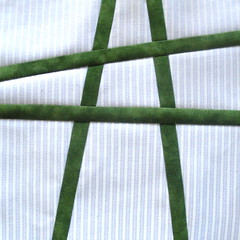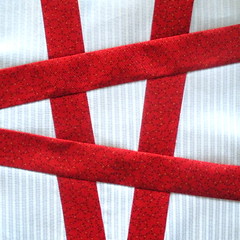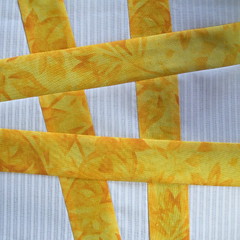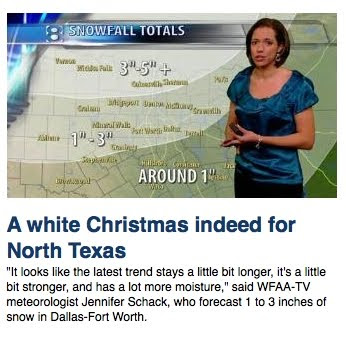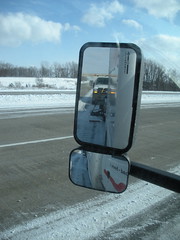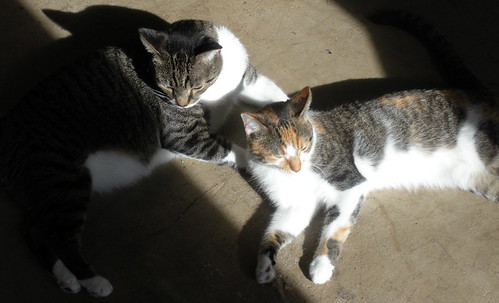I am still down with the flu, but for
BAD09, I thought this list was worth sharing. It was published by the
Center for American Progress a little over a year ago.
The Top 100 Effects of Global Warming
Global Warming Wrecks All the Fun
Say Goodbye to French Wines
Wacky temperatures and rain cycles brought on by global warming are threatening something very important: Wine. Scientists believe global warming will “shift viticultural regions toward the poles, cooler coastal zones and higher elevations.” What that means in regular language: Get ready to say bye-bye to French Bordeaux and hello to British champagne. [LA Times]

Say Goodbye to Light and Dry Wines
Warmer temperatures mean grapes in California and France develop their sugars too quickly, well before their other flavors. As a result, growers are forced to either a) leave the grapes on the vines longer, which dramatically raises the alcoholic content of the fruit or b) pick the grapes too soon and make overly sweet wine that tastes like jam. [Washington Post]
Say Goodbye to Pinot Noir
The reason you adore pinot noir is that it comes from a notoriously temperamental thin-skinned grape that thrives in cool climates. Warmer temperatures are already damaging the pinots from Oregon, “baking away” the grape’s berry flavors. [Bloomberg]
Say Goodbye to Baseball
The future of the ash tree—from which all baseball bats are made—is in danger of disappearing, thanks to a combination of killer beetles and global warming. [NY Times]
Say Goodbye to Christmas Trees
The Pine Bark Beetle, which feeds on and kills pine trees, used to be held in control by cold winter temperatures. Now the species is thriving and killing off entire forests in British Columbia, unchecked. [Seattle Post Intelligencer]
Say Goodbye to the Beautiful Alaska Vacation
Warmer weather allowed Spruce Bark Beetles to live longer, hardier lives in the forests of Kenai Peninsula in Alaska, where they killed off a section of spruce forest the size of Connecticut. [Alaska Science Forum]
Say Goodbye to Fly Fishing
As water temperatures continue to rise, researchers say rainbow trout, "already at the southern limits” of their temperature ranges in the Appalachian mountains, could disappear there over the next century. [Softpedia]
Say Goodbye to Ski Competitions
Unusually warmer winters caused the International Ski Federation to cancel last year’s Alpine skiing World Cup and opening races in Sölden, Austria. Skiers are also hard-pressed now to find places for year-round training. Olympic gold medalist Anja Paerson: “Of course we’re all very worried about the future of our sport. Every year we have more trouble finding places to train.” [NY Times]
Say Goodbye to Ski Vacations
Slopes on the East Coast last year closed months ahead of time due to warmer weather, some losing as much as a third of their season. [Washington Post]
Say Hello to Really Tacky Fake Ski Vacations
Weiner Air Force and former House Majority Leader Dick Armey are building a year-round ski resort in Texas, with “wet, white Astroturf with bristles” standing in for snow to make up for all the closed resorts around the country. [WSJ]
Say Goodbye to That Snorkeling Vacation
The elkhorn coral which used to line the floor of the Caribbean are nearly gone, “victims of pollution, warmer water and acidification from the greenhouse gas carbon dioxide seeping into oceans.” [Denver Post]
Say Goodbye to That Tropical Island Vacation
Indonesia's environment minister announced this year that scientific studies estimate about 2,000 of the country's lush tropical islands could disappear by 2030 due to rising sea levels. [ABC News]
Say Goodbye to Cool Cultural Landmarks
The World Monuments Fund recently added “global warming” as a threat in their list of the top 100 threatened cultural landmarks. “On Herschel Island, Canada, melting permafrost threatens ancient Inuit sites and a historic whaling town. In Chinguetti, Mauritania, the desert is encroaching on an ancient mosque. In Antarctica, a hut once used by British explorer Captain Robert Falcon Scott has survived almost a century of freezing conditions but is now in danger of being engulfed by increasingly heavy snows.” [AP]
Say Goodbye to Salmon Dinners
Get ready for a lot more chicken dinners: Wild pacific salmon have already vanished from 40 percent of their traditional habitats in the Northwest and the NRDC warns warmer temperatures are going to erase 41 percent of their habitat by 2090. [ENS]
Say Goodbye to Lobster Dinners
Lobsters thrive in the chilly waters of New England, but recent numbers show that as those waters have warmed up, “the big-clawed American lobster—prized for its delicate, sweet flesh—has been withering at an alarming rate from New York state to Massachusetts.” [AP]
Say Goodbye to Discoveries of Sharks That Can Walk
Scientists recently revealed a “lost world” of marine life off the coast of Indonesia, including 20 new species of corals, 8 species of shrimp, a technicolor fish that “flashes” bright pink, yellow, blue, and green hues, and sharks that “walk” on their fins. (“Avon Lady. Candygram.”) However, marine biologists warn the threats posed by global warming means millions of other crazycool sea creatures may become extinct before we ever discover them. [ABC]
Say Goodbye to Meadows of Wildflowers
Scientists think global warming could wipe out a fifth of the wildflower species in the western United States. They’ll be replaced by dominant grasses. [National Wildlife Federation]

Say Goodbye to Guacamole
Scientists from the Lawrence Livermore National Laboratory predict hotter temps will cause a 40 percent drop in California’s avocado production over the next 40 years. [Lawrence Livermore National Lab]
Say Goodbye to Mixed Nuts
Guess you’ll have to start eating pretzels at the bar instead: Scientists from the Lawrence Livermore National Laboratory predict hotter temps will cause a 20 percent drop in California’s almond and walnut crops over the next 40 years. [Science Daily]
Say Goodbye to French Fries
Scientists from the Consultative Group on International Agricultural Research say warmer temperatures are killing off wild relatives of potato and peanut plants, “threatening a valuable source of genes necessary to help these food crops fight pests and drought.” [AP]
Say Goodbye to Your Pretty Lawn
Thanks to global warming, dandelions will grow “taller, lusher, and more resilient.” By 2100, the weed will produce 32 percent more seeds and longer hairs, which allow them to spread further in the wind. [LA Times]
Say Hello to More Mosquitoes
Get ready for more mosquitoes. Mosquitoes like to live in drains and sewer puddles. During long dry spells (brought on by higher temperatures) these nasty, stagnant pools become a vital source of water for thirsty birds ... which provide a tasty feast for the resident mosquitoes. At the same time, these dry spells “reduce the populations of dragonflies, lacewings, and frogs that eat the mosquitoes.” [Washington Post]
Say Hello to Poison Ivy
You’re gonna need an ocean of calamine lotion. Increased CO2 levels cause poison ivy and other weeds to grow “taller, lusher, and more resilient.” [LA Times]
Say Hello to Bulgarian Hooker Shortages
“Brothel owners in Bulgaria are blaming global warming for staff shortages. They claim their best girls are working in ski resorts because a lack of snow has forced tourists to seek other pleasures.” [Metro UK]
Global Warming Kills the Animals
Species Disappear
The latest report from the World Conservation Union says that a minimum of 40 percent of the world’s species are being threatened ... and global warming’s one of the main culprits. [Reuters]

Cannibalistic Polar Bears...
As longer seasons without ice keep polar bears away from food, they start eating each other. [AP]
...And Dying Polar Bears
A recent study completed by the U.S. Geological Survey shows that cannibalism—while brutal—may be the least of the bear’s problems. Many are also drowning, unable to swim in the increased spaces between melting sea ice. Two-thirds of them may be gone by 2050. [National Geographic] [Mongo Bay]
More Bear Attacks
Earlier this year, Moscow warned its citizens to beware of brown bear attacks. In Russia, it’s been too hot in the winter for bears to sleep. When bears can’t hibernate, they get very grouchy and become “unusually aggressive.”[Der Spiegel]
Dying Gray Whales
Save the whales! Global warming is thwarting majestic gray whales’ struggle to recover from their endangered status. In recent years, more gray whales have been washing up on beaches after starving to death. Culprit: Rising ocean temps, which are killing off their food supply. [Washington Post]

Death March of the Penguins
Scientists blame global warming for the declining penguin population, as warmer waters and smaller ice floes force the birds to travel further to find food. “Emperor penguins ... have dropped from 300 breeding pairs to just nine in the western Antarctic Peninsula.” [National Geographic] [MSNBC]
Farewell to Frogs
An estimated two-thirds of the 110 known species of harlequin frog in Central and South America have vanished since the 1980s due to the outbreak of a deadly frog fungus ... brought on by global warming. Scientist J. Allen Pound: "Disease is the bullet killing frogs, but climate change is pulling the trigger.” [National Geographic]
Farewell to the Arctic Fox
The White Arctic Fox used to rule the colder climes, but as temperatures warm up, its more aggressive cousin, the Red Fox, is moving North and taking over. [Wired]
Farewell to the Walrus
Walrus pups rest on sea ice while their mothers hunt for food. A new study shows more and more abandoned pups are being stranded on floating islands as ice islands melt. Also, sadly, mother walruses are abandoning them to follow the ice further north. [Mongo Bay]
Farewell to Cute Koala Bears
Australia’s Climate Action Network reports that higher temperatures are killing off eucalyptus trees while higher levels of CO2 in the atmosphere are decreasing the nutritional value of the eucalyptus leaves Koala bears eat. They warn that the cute furry creatures could become extinct in the next few decades. [Science]
Jellyfish Attack
Ouch! At least 30,000 people were stung by jellyfish along the Mediterranean coast last year; some areas boasted more than 10 jellyfish per square foot of water. Thank global warming: Jellyfish generally stay out of the way of swimmers, preferring the warmer, saltier water of the open seas. Hotter temperatures erase the natural temperature barrier between the open sea and the shore. The offshore waters also become more saline, causing the stinging blobs of hurt to move in toward the coastlines (and your unsuspecting legs). [BBC]

Giant Squid Attack
Giant squid—an “aggressive predator” that grows up to 7 feet long and can weigh more than 110 lbs—used to only be found in the warm waters along the Pacific equator. Hotter waters mean today they’re invading the waters of California and even Alaska. [ABC]
Homeless Sheep, Goats, and Bears
Bighorn sheep, mountain goats, and grizzly bears are becoming homeless, due to the disappearance of the alpine meadows in Glacier National Park. [AP]
Homeless Deer and Marsh Rabbits
The deer and marsh rabbits in the Florida Keys also face a housing crisis, as water levels rise and warmer temperatures destroy coastal prairies and freshwater marsh habitats. [AP]
Gender-Bended Lizards
Scientists in Australia found warmer temperatures caused baby bearded dragon lizards to change from males to females while still in their eggs, making it harder for them to find mates. Trippy. [ABC AU]
More Stray Kitties
Global warming has extended the cat-breeding season beyond spring, which is the usual time for a kitten boom. The kittens are often homeless and end up in animal shelters. And remember, “The trouble with a kitten is that/ Eventually it becomes a cat.” [NBC-10: Philadelphia] [Ogden Nash]
Suffocating the Lemmings
Lemmings like to burrow under the snow when they hibernate for the winter. Warmer temperatures cause rain to fall during the winter months, where it freezes into a hard sheet of ice above the sleeping lemmings, who can’t crack their way out come spring. [Denver Post]
Goodbye to Cod
Cod in the North Sea are dying out. The warmer waters kill off the plankton the cod eat, making those ones that survive smaller. The warmer waters also mean the poor dears have become “less successful at mating and reproducing.” [MSNBC]
Birds around the World
Recent research found that “up to 72 percent of bird species in northeastern Australia and more than a third in Europe could go extinct due to global warming.” [Monga Bay]
Birds on the Coast
Hundreds of Pacific seabirds—such as common murres, auklets, and tufted puffins—washed ashore last year after starving to death. Scientists blame global warming which led to less plankton, which led to fewer small fish for the birds to eat. [San Francisco Chronicle]
Birds in your Backyard
A report by the National Audubon Society found that birds such as the bobwhite and field sparrow are dying thanks to global warming, as higher temperatures mess with their migration schedules. With vital food stocks peaking earlier and earlier, many migratory birds get to the party too late and can’t find enough to eat. [CNN] [ABC News]
Death to a Snail
The Aldabra banded snail is officially extinct. Existing only on an atoll 426 kilometers northwest of the northern tip of Madagascar, the snail died out after warmer weather cut the rainfall in its habitat. [Monga Bay]
Global Warming Kills the Planet
Greenland’s Melting
Greenland is melting at a rate of 52 cubic miles per year—much faster than once predicted. If Greenland’s entire 2.5 million cubic kilometers of ice were to melt, it would lead to a global sea level rise of 7.2 meters, or more than 23 feet. [LA Times]

Less Ice in the Arctic
The amount of ice in the Arctic at the end of the 2005 summer “was the smallest seen in 27 years of satellite imaging, and probably the smallest in 100 years.” Experts said it’s the strongest evidence of global warming in the Arctic thus far. [Washington Post]
The Northwest Passage Becomes a Reality
Remember the “Northwest Passage”? For centuries, explorers were obsessed with the almost-mythical idea of northern sea route connecting the Atlantic and Pacific. Well...it’s here. So much of the ice cover in the Arctic disappeared this summer that ships were able to take recreational trips through the Arctic Sea, and scientists say so much of the ice cover will disappear in upcoming years that the passage could be open to commercial shipping by 2020. [CNN]
Ice Shelf in Antarctica Bites the Dust
In 2002, a chunk of ice in Antarctica larger than the state of Rhode Island collapsed into the sea. British and Belgian scientists said the chunk was weakened by warm winds blowing over the shelf ... and that the winds were caused by global warming. [ENS]
Ice Shelf in Canada Bites the Dust
In 2005, a giant chunk of ice the size of Manhattan broke off of a Canadian ice shelf and began free floating westward, putting oil drilling operations in peril. [Reuters]
Say Farewell to Glaciers
“In Glacier National Park, the number of glaciers in the park has dropped from 150 to 26 since 1850. Some project that none will be left within 25 to 30 years.” [AP]
The Green, Green Grass of Antarctica
Grass has started to grow in Antarctica in areas formerly covered by ice sheets and glaciers. While Antarctic hair grass has grown before in isolated tufts, warmer temperatures allow it to take over larger and larger areas and, for the first time, survive through the winter. [UK Times]
The Swiss Foothills
Late last summer, a rock the size of two Empire State Buildings in the Swiss Alps collapsed onto the canyon floor nearly 700 feet below. The reason? Melting glaciers. [MSNBC]
Giant “Sand Seas” in Africa
Global warming may unleash giant “sand seas” in Africa—giant fields of sand dunes with no vegetation—as a shortage of rainfall and increasing winds may “reactivate” the now-stable Kalahari dune fields. That means farewell to local vegetation, animals, and any tourism in the areas. [National Geographic]

Florida’s National Marine Sanctuary in Trouble
Global warming is “bleaching” the coral in the Florida Keys National Marine Sanctuary, killing the coral, tourism, and local fish that live among the coral for protection. [Washington Post]
The Oceans are Turning to Acid
It sounds like a really bad sci-fi movie, but it’s true: The oceans are turning to acid! Oceans absorb CO2 which, when mixed with seawater, turns to a weak carbonic acid. Calcium from eroded rocks creates a “natural buffer” against the acid, and most marine life is “finely tuned” to the current balance. As we produce more and more CO2, we throw the whole balance out of whack and the oceans turn to acid. [CS Monitor]
Say Goodbye to the Great Barrier Reef
According to the U.N., the Great Barrier Reef will disappear within decades as “warmer, more acidic seas could severely bleach coral in the world-famous reef as early as 2030.” [CBC News]
Mediterranean Sea? Try the Dead Sea.
Italian experts say thanks to faster evaporation and rising temperatures, the Mediterranean Sea is quickly turning into “a salty and stagnant sea.” The hot, salty water “could doom many of the sea's plant and animal species and ravage the fishing industry.” [AP]
A Sacred River Dries Up
The sacred Ganges River in India is beginning to run dry. The Ganges is fed by the Gangotri glacier, which is today “shrinking at a rate of 40 yards a year, nearly twice as fast as two decades ago.” Scientists warn the glacier could be gone as soon as 2030. [Washington Post]
Disappearing African Rivers
Geologists recently projected a 10 percent to 20 percent drop in rainfall in northwestern and southern Africa by 2070. That would leave Botswana with just 23 percent of the river it has now; Cape Town would be left with just 42 percent of its river water. [National Geographic]
Suddenly Vanishing Lakes
What happened to the five-acre glacial lake in Southern Chile? In March, it was there. In May, it was ... gone. Scientists blame global warming. [BBC News]
Goodbye to the Mangrove Trees
Next on the global warming hit list: Rising sea levels linked to climate change mean we could lose half of the mangrove trees of the Pacific Isles by the end of the century. [UNEP]
Volcanoes Blow Their Tops
British scientists warn of another possible side effect of climate change: A surge of dangerous volcanic eruptions. [ABC News Australia]
More Hurricanes
Over the past century, the number of hurricanes that strike each year has more than doubled. Scientists blame global warming and the rising temperature of the surface of the seas. [USA Today]
More Floods
During the summer of 2007, Britain suffered its worst flood in 60 years. Scientists point the finger directly at global warming, which changed precipitation patterns and is now causing more “intense rainstorms across parts of the northern hemisphere.” [Independent]
More Fires
Hotter temperatures could also mean larger and more devastating wildfires. This past summer in California, a blaze consumed more than 33,500 acres, or 52 square miles.
[ABC] [AP]
More Wildfires
Global warming has also allowed non-native grasses to thrive in the Mojave Desert, where they act as fast-burning fuel for wildfires. [AP]
Thunderstorms Get Dangerous
Hurricanes aside, NASA scientists now say as the world gets hotter, even smaller thunderstorms will pose more severe risks with “deadly lightning, damaging hail and the potential for tornadoes.” [AP]
Higher Sea Levels
Scientists believe sea levels will be three feet higher by the end of the century than they are now. [National Geographic]

Burning Poo
As “shifting rainfall patterns” brought on by global warming “have made northern Senegal drier and hotter,” entire species of trees (like the Dimb Tree) are dying out, making it harder for natives to find firewood. As a result, more people are having to burn cow dung for cooking fires. [MSNBC]
A New Dust Bowl
Calling Mr. Steinbeck. Scientists this year reported the Southwest United States is "expected to dry up notably in this century and could become as arid as the North American dust bowl of the 1930s," a process which has already started. [ABC News]
Global Warming Makes Us Sicker
People Are Dying
150,000: Number of people the World Health Organization estimates are killed by climate-change-related issues every year. [Washington Post]
Heat Waves and Strokes
Authorities in China say warmer temperatures are responsible for an uptick in heat-wave associated deaths, such as strokes and heart disease. They calculated between 173 and 685 Chinese citizens per million die every year from ailments related to global warming. [MSNBC]
Death by Smog
Three words you really don’t want in your obit: “Death by Smog.” Yet Canadian doctors say smog-related deaths could rise by 80 percent over the next 20 years. And since warm air is a key ingredient in smog, warmer temperatures will increase smog levels. [CBC News]
More Heart Attacks
Doctors warn global warming will bring more cardiovascular problems, like heart attacks. “‘The hardening of the heart's arteries is like rust developing on a car,’ said Dr. Gordon Tomaselli, chief of cardiology at Johns Hopkins University. ‘Rust develops much more quickly at warm temperatures and so does atherosclerosis.’” [MSNBC]
More Mold and Ragweed = More Allergies, Asthma
A Harvard Study in 2004 showed higher concentrations of CO2 in the atmosphere is good news to allergens like mold and ragweed (they love the stuff). And that means higher rates of asthma attacks, especially in kids. [Globe and Mail]
A Resurgence In Deadly Disease
“The World Health Organization has identified more than 30 new or resurgent diseases in the last three decades, the sort of explosion some experts say has not happened since the Industrial Revolution brought masses of people together in cities.” Why? Global warming “is fueling the spread of epidemics in areas unprepared for the diseases” when “mosquitoes, ticks, mice and other carriers are surviving warmer winters and expanding their range, bringing health threats with them.” Ick. [Washington Post]
More Malaria in Africa
“A WHO report in 2000 found that warming had caused malaria to spread from three districts in western Kenya to 13 and led to epidemics of the disease in Rwanda and Tanzania.” [Washington Post]

Malaria Spreading in Western Europe
The World Health Organization warns warmer temperatures mean malaria-carrying mosquitoes are able to live in northern climes, which could lead to a surge in malaria outside the tropics (aka Europe). [BBC]
Malaria Spreading in South America
Thanks to global warming, “Malaria has spread to higher altitudes in places like the Colombian Andes, 7,000 feet above sea level.” [An Inconvenient Truth]
Malaria Spreading in Russia
Russians found larvae of the anopheles mosquito, the malaria carrier, for the first time in Moscow last September. [BBC]
Spread of Dengue Fever
Scientists predict warmer temperatures will allow mosquitoes carrying Dengue Fever to travel outside the tropics. Since people in cooler climes lack immunity from previous exposure, that means transmission would be extensive. You get a severe fever, you start spontaneously bleeding, you can die. There is no vaccine. [Science Daily]
Death in the Time of Cholera
Cholera, which thrives in warmer water, appeared in the newly warmed waters of South America in 1991 for the first time in the 20th century. “It swept from Peru across the continent and into Mexico, killing more than 10,000 people.” [Washington Post]
Spread of Lyme Disease
Cold weather no longer kills ticks that carry Lyme Disease. Ticks recently began spreading along the coastlines of Scandinavia, which formerly was too cold for them to survive. Cases of Lyme Disease in the area have doubled since the late 1990s. [MSNBC]
West Nile Virus Home Invasion
Once confined to land near the equator, West Nile Virus is now found as far north as Canada. Seven years ago, West Nile virus had never been seen in North America; today, it has “infected more than 21,000 people in the United States and Canada and killed more than 800.” [Washington Post]
Global Warming Threatens Our National Security
IISS: “A Global Catastrophe” For International Security
A recent study done by the International Institute for Strategic Studies has likened the international security effects of global warming to those caused by nuclear war. [On Deadline]
U.N.: As Dangerous As War
United Nations Secretary General Ban Ki-moon said this year that global warming poses as much of a threat to the world as war. [BBC]
Center for Naval Analyses: National Security Threat
In April, a report completed by the Center for Naval Analyses predicted that global warming would cause “large-scale migrations, increased border tensions, the spread of disease and conflicts over food and water.” [Seattle Post-Intelligencer]

Genocide in Sudan
UN Secretary General Ban Ki-moon charges, “Amid the diverse social and political causes, the Darfur conflict began as an ecological crisis, arising at least in part from climate change.” [Washington Post]
War in Somalia
In April, a group of 11 former U.S. military leaders released a report charging that the war in Somalia during the 1990s stemmed in part from national resource shortages caused by global warming. [Washington Post]
Starvation
A study by IISS found that reduced water supplies and hotter temperatures mean “65 countries were likely to lose over 15 percent of their agricultural output by 2100.” [Yahoo]
Large-Scale Migrations
Global warming will turn already-dry environments into deserts, causing the people who live there to migrate in massive numbers to more livable places. [MSNBC]
More Refugees
A study by the relief group Christian Aid estimates the number of refugees around the world will top a billion by 2050, thanks in large part to global warming. [Telegraph]
Increased Border Tensions
A report called “National Security and the Threat of Climate Change,” written by a group of retired generals and admirals, specifically linked global warming to increased border tensions. “If, as some project, sea levels rise, human migrations may occur, likely both within and across borders.” [NY Times]
Famine
“Developing countries, many with average temperatures that are already near or above crop tolerance levels, are predicted to suffer an average 10 to 25 percent decline in agricultural productivity by the 2080s.” [Economic Times]

Droughts
Global warming will cause longer, more devastating droughts, thus exacerbating the fight over the world’s water. [Washington Post]
The Poor Are Most at Risk
Although they produce low amounts of greenhouse gases, experts say under-developed countries—such as those in sub-Saharan Africa—have “the most to lose under dire predictions of wrenching change in weather patterns.” [Washington Post]
Your Checkbook
A report done last year by the British government showed global warming could cause a Global Great Depression, costing the world up to 20 percent of its annual Global Domestic Product. [Washington Post]
The World’s Checkbook
A study by the Global Development and Environment Institute at Tufts University found that ignoring global warming would end up costing $20 trillion by 2100. [Tufts]
This piece is from the Center for American Progress Action Fund's Mic Check Radio.


